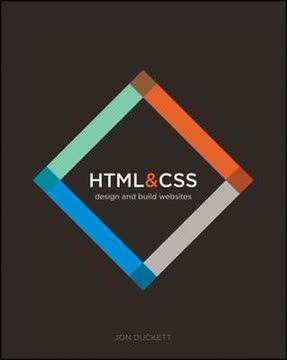Key Takeaways
1. Content strategy is crucial for effective web presence
Content strategy plans for the creation, delivery, and governance of useful, usable content.
Define content strategy. Content strategy is the practice of planning for content creation, delivery, and governance to ensure it meets both user needs and business objectives. It encompasses text, data, graphics, video, and audio across various online platforms.
Importance of content strategy:
- Aligns content with business goals and user needs
- Ensures consistency across channels and platforms
- Improves user experience and engagement
- Reduces content-related costs and inefficiencies
- Supports SEO and findability efforts
Without a content strategy, organizations often struggle with outdated, irrelevant, or inconsistent content that fails to engage users or drive business results.
2. Start with a content audit to understand your current state
Before you ever begin to brainstorm about which content you need, you must understand exactly what you have.
Conduct a content audit. A content audit is a comprehensive inventory and assessment of all existing content across your web properties. It provides valuable insights into the current state of your content and serves as a foundation for future content strategy decisions.
Key components of a content audit:
- Quantitative audit: Catalog all content items, including URLs, titles, and metadata
- Qualitative audit: Assess content quality, relevance, and effectiveness
- Specialized audits: Evaluate specific aspects like SEO, metadata, or localization
The audit helps identify content gaps, redundancies, and opportunities for improvement. It also provides stakeholders with a clear picture of the content landscape, making it easier to build a case for content strategy initiatives.
3. Analyze your content ecosystem before making recommendations
Your web content doesn't exist in a vacuum. Organizational goals, real-world resources, who your users are, what your users want, competitor activities, and many other factors all affect whether or not your web content will be successful.
Conduct thorough analysis. Before making content recommendations, it's crucial to understand the entire content ecosystem. This includes internal factors like organizational goals and resources, as well as external factors such as user needs, competitor activities, and industry trends.
Key areas to analyze:
- Business objectives and user goals
- Current content creation and governance processes
- User research and personas
- Competitor content analysis
- Content delivery channels and technologies
- Legal and regulatory requirements
This comprehensive analysis ensures that your content strategy recommendations are grounded in reality and aligned with both business needs and user expectations.
4. Develop an actionable content strategy with clear objectives
A strategy is a holistic, well-considered plan for obtaining a specific goal or result.
Create a comprehensive strategy. An effective content strategy should provide clear, actionable recommendations for content creation, delivery, and governance. It should be based on the insights gained from your content audit and analysis.
Key components of a content strategy:
- Content objectives aligned with business goals
- Defined target audiences and user needs
- Content types and formats
- Voice and tone guidelines
- Metadata and SEO recommendations
- Content creation and approval workflows
- Governance and maintenance plans
Ensure that your strategy is realistic and achievable given your organization's resources and constraints. Include specific metrics and timelines to measure success and demonstrate value to stakeholders.
5. Create a robust content workflow and maintenance plan
Content doesn't just happen.
Establish content processes. Developing a clear content workflow and maintenance plan is crucial for ensuring the ongoing quality and relevance of your content. This involves defining roles, responsibilities, and processes for content creation, review, approval, and ongoing maintenance.
Key elements of content workflow and maintenance:
- Content request and ideation process
- Creation and revision workflows
- Review and approval procedures
- Publishing and distribution processes
- Regular content audits and updates
- Archiving and deletion policies
Implement tools and systems to support these processes, such as editorial calendars, content management systems, and collaboration platforms. Regularly review and refine your workflows to improve efficiency and effectiveness.
6. Measure content effectiveness to demonstrate value
Measure what's happening and how improvements affect content performance, and you'll win the support and funding necessary to give your audiences the content they deserve.
Implement content metrics. Measuring the effectiveness of your content is crucial for demonstrating its value to stakeholders and informing ongoing strategy improvements. Develop a measurement framework that aligns with your content objectives and business goals.
Key content metrics to consider:
- User engagement (time on page, bounce rate, pages per session)
- Conversion rates and goal completions
- Search engine rankings and organic traffic
- Social media shares and engagement
- Customer feedback and satisfaction scores
Use analytics tools and user research methods to gather both quantitative and qualitative data. Regularly report on content performance and use insights to refine your content strategy and tactics.
7. Shift organizational mindset to prioritize content as a business asset
Until we commit to treating content as a critical asset worthy of strategic planning and meaningful spend, we'll continue to churn out worthless content in reaction to unmeasured requests.
Advocate for content. To implement an effective content strategy, organizations must shift their mindset to view content as a valuable business asset rather than a commodity. This requires education, advocacy, and sometimes organizational change.
Steps to elevate content's importance:
- Demonstrate content's impact on business goals and user satisfaction
- Educate stakeholders on the complexities of content creation and management
- Advocate for dedicated content roles and resources
- Integrate content considerations into all aspects of web projects
- Develop and enforce content governance policies
By positioning content as a strategic asset, organizations can allocate appropriate resources and prioritize content quality, ultimately leading to improved user experiences and better business outcomes.
Last updated:
FAQ
What's "Content Strategy for the Web" by Kristina Halvorson about?
- Introduction to Content Strategy: The book introduces the emerging practice of content strategy, focusing on planning for the creation, delivery, and governance of useful, usable content.
- Target Audience: It is aimed at companies, agencies, and beginning practitioners who want to understand what content strategy is, why it’s important, and how to implement it.
- Comprehensive Guide: The book provides a high-level overview of the benefits, roles, activities, and deliverables associated with content strategy.
Why should I read "Content Strategy for the Web"?
- Practical Insights: The book offers practical insights into how to fix web content and make it a valuable business asset rather than an afterthought.
- Strategic Approach: It emphasizes the importance of a strategic approach to content, which can lead to better user experiences and business outcomes.
- Expert Guidance: Written by Kristina Halvorson, a leading content strategist, the book is a trusted resource for anyone looking to improve their web content strategy.
What are the key takeaways of "Content Strategy for the Web"?
- Content as a Business Asset: Treat content as a critical business asset that requires strategic planning and ongoing governance.
- Comprehensive Process: Understand the full content lifecycle, from auditing and analysis to strategy, creation, and maintenance.
- Collaboration and Alignment: Emphasize the importance of collaboration across disciplines and alignment with business objectives and user needs.
How does Kristina Halvorson define content strategy in the book?
- Holistic Planning: Content strategy is defined as the practice of planning for the creation, delivery, and governance of useful, usable content.
- Beyond Tactics: It’s not just about tactics like blogs or social media; it’s a comprehensive plan that aligns with business goals and user needs.
- Content Lifecycle: The strategy covers the entire content lifecycle, ensuring content is treated as a valuable asset.
What are the main components of a content strategy according to the book?
- Creation: Determine what content will be created, why, and how it will be structured and sourced.
- Delivery: Plan how content will be delivered to users, including the tools and channels used.
- Governance: Establish who will maintain the content, how updates will be managed, and what standards will be enforced.
What is the role of a content strategist as described in "Content Strategy for the Web"?
- Content Advocate: The content strategist advocates for content throughout the project, ensuring it aligns with business and user needs.
- Research and Analysis: They conduct research and analysis to inform content recommendations and decisions.
- Implementation Oversight: The strategist oversees the implementation of content strategy, including creation, delivery, and governance.
How does the book suggest conducting a content audit?
- Content Inventory: Start with a content inventory, cataloging all existing content to understand what you have and where it lives.
- Quantitative and Qualitative Audits: Perform both quantitative audits (focusing on data and organization) and qualitative audits (focusing on content quality and effectiveness).
- Specialized Audits: Consider specialized audits for SEO, metadata, and localization to address specific content needs.
What is the importance of a content workflow as per the book?
- Streamlined Process: A content workflow defines how content is requested, created, reviewed, approved, and delivered, streamlining the process.
- Roles and Responsibilities: It clarifies roles and responsibilities, ensuring everyone knows their part in the content lifecycle.
- Efficiency and Quality: A well-designed workflow improves efficiency and content quality by preventing bottlenecks and ensuring consistency.
How does "Content Strategy for the Web" address content maintenance?
- Lifecycle Approach: The book emphasizes a lifecycle approach to content, where maintenance is an ongoing process, not a one-time task.
- Maintenance Plan: It suggests creating a maintenance plan that outlines tasks, roles, and schedules for keeping content accurate and relevant.
- Editorial Oversight: Regular audits and editorial oversight are crucial to maintaining content quality over time.
What are some of the best quotes from "Content Strategy for the Web" and what do they mean?
- "Content is the web.": This quote underscores the centrality of content in the online experience, highlighting its importance in web strategy.
- "Content strategy can help.": A simple yet powerful statement that encapsulates the book’s message that a strategic approach to content can solve many web-related challenges.
- "Content should be your first thought. Not an afterthought.": This emphasizes the need to prioritize content in web projects, rather than leaving it until the last minute.
How does the book suggest measuring the success of a content strategy?
- Web Analytics: Use web analytics to assess user behavior and measure the impact of content on business objectives.
- Success Metrics: Define clear success metrics tied to business goals and user needs to evaluate content effectiveness.
- Continuous Improvement: Implement a continuous improvement process, using data to make informed decisions about content updates and changes.
What is the relationship between content strategy and user experience design in the book?
- Interdependent Roles: The book argues that content strategy and user experience design are interdependent, with content being a key component of the user experience.
- Collaboration Needed: Successful web projects require collaboration between content strategists and UX designers to ensure content supports the overall user experience.
- Beyond Design: Content strategy goes beyond design, focusing on the substance and structure of content to meet user needs and business goals.
Review Summary
Content Strategy for the Web receives mostly positive reviews for providing a comprehensive overview of content strategy fundamentals. Readers appreciate its practical approach, clear explanations, and useful frameworks for developing and implementing content strategies. Many find it helpful for beginners and professionals alike. Some criticize it for being outdated or too focused on large organizations. The book's emphasis on governance, auditing, and content lifecycle management is frequently praised. Overall, reviewers consider it an essential resource for those working with web content.
Similar Books










Download PDF
Download EPUB
.epub digital book format is ideal for reading ebooks on phones, tablets, and e-readers.




